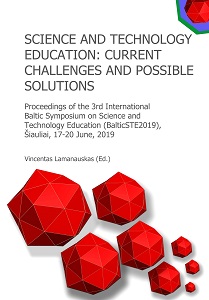TEACHING SYSTEMS THAT CAN MIMIC DIFFERENT TEACHING-LEARNING ENVIRONMENTS
TEACHING SYSTEMS THAT CAN MIMIC DIFFERENT TEACHING-LEARNING ENVIRONMENTS
Author(s): Kalle Saastamoinen, Antti Rİssanen
Subject(s): Social Sciences, Education, School education
Published by: Scientia Socialis, UAB
Keywords: automatic teaching machine; artificial intelligence; student centric learning; learning environment; learning style
Summary/Abstract: Conventional learning guidance systems are typically automated machines for creating teaching materials: quizzes, exercises, examinations etc. In the future, systems will also offer ease of use, attention to sociality, ability to adapt to the pupil's needs and skill levels, and time savings.Ease-of-use and adaptation can be sought using systems based on Artificial Intelligence (AI). Chatbots would save teachers time by talking with students about their problems automatically. The virtual classroom would release people from the physical state and offer the opportunity to play with different roles. For the teaching of physics, the virtual classroom provides an opportunity to try out things that are not practically possible. AI could enable automatically identify students’ strengths and weaknesses and utilize them. On the other hand, AI also could allow pupils to gain strength through peer learning by bringing students of the same level from all over the world to discuss their own views and could automatically filter out sub-standard and clearly false answers. AI can also be capable of automatically creating tailor-made materials based on student-level learning using deep learning. Finally, AI can also be used to treat pupils' reviews to a large extent. In this research we will evaluate how well new technology powered by AI could respond to the demands of different teaching-learning environments.We will present a learning system that is in use and discuss its differences between opportunities of Artificial Intelligence (AI) can support different teaching-learning environments and discuss little how AI could support different learning styles.
- Page Range: 194-198
- Page Count: 5
- Publication Year: 2019
- Language: English
- Content File-PDF

